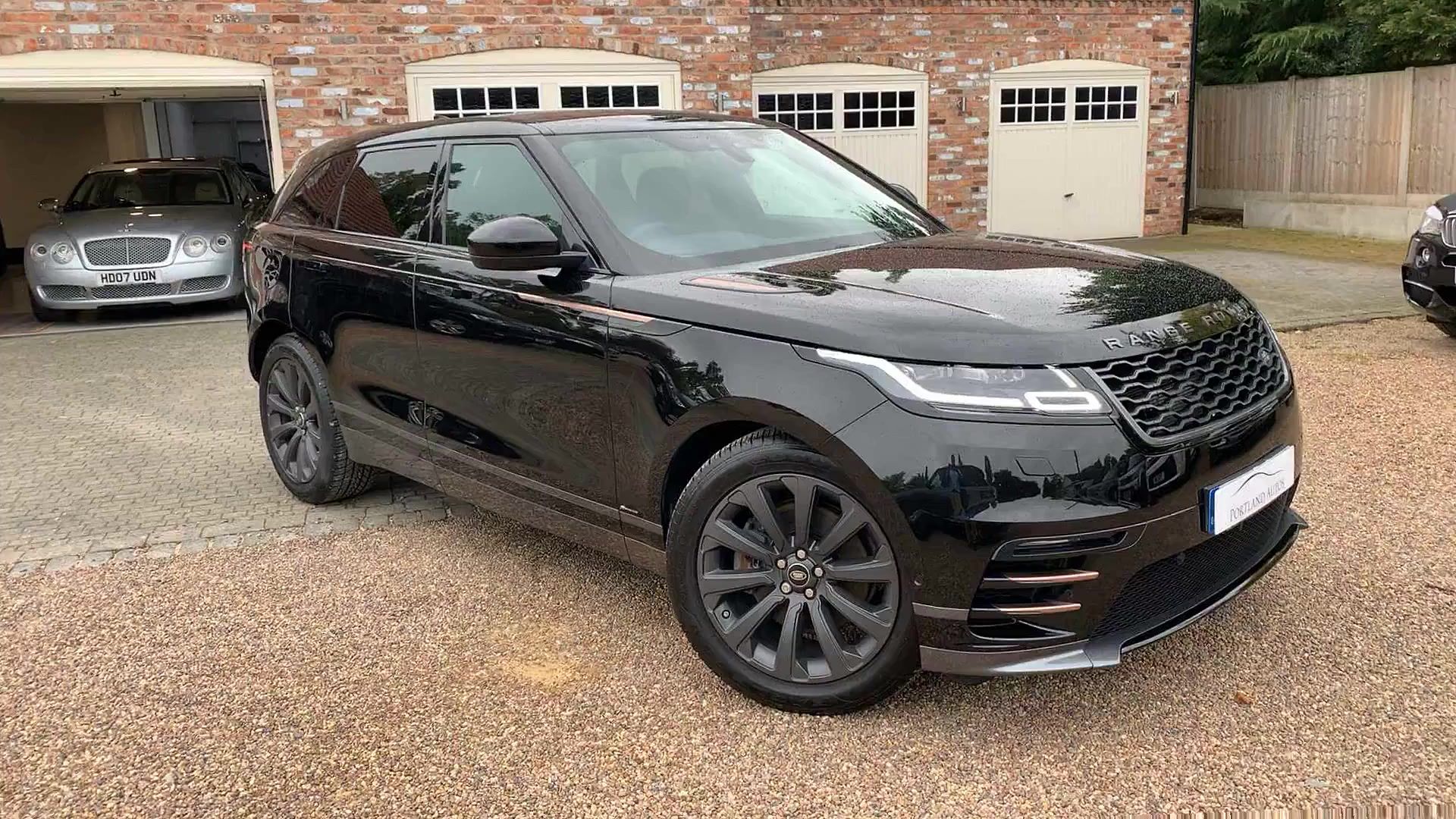

The new Velar comes with a choice of three engines. The lighter Velar still packs a punch with its smaller, more efficient engines and more suited on-road capability. While both are powerful SUVs the Range Rover Sport is a heavier, more powerful and more capable off-road model. In comparison, the Sport only offers 62.2 cubic feet in cargo space. In terms of cargo space, the Velar features 70.1 cubic feet making it a generously sized SUV in the compact luxury segment. When it comes to space there is higher seating positions in the Sport with more headroom and legroom in the backseat. When choosing an interior color, you'll get more versatility with the Velar for example, it offers a new luxurious alternative to leather called the "Dapple Grey Premium Textile." The Range Rover Sport also has a rotary off-road settings controller, and the Velar has a rotary style shifter.

The Range Rover's is lined in the silver trim, whereas the Velar's piano black finishing goes to the edges of what is being called a "floating console" design. The interiors both features a new dual touchscreen center console interface. The Velar's retracting door handles, the dark band between its taillights and deeper grille make these exteriors different. The velar is 4.5 inches shorter in height. But the bigger exterior difference is width.

The Velar is two inches shorter in length and wheelbase as well as three inches narrower. Overall the Velar is a sleeker design that is more futuristic in comparison to its sibling the Range Rover Sport. There is no denying that at first glance the Range Rover Velar and the Range Rover Sport could be mistaken for each other. We are going to explore these differences to see which one might be better for you. When taking a closer look, there are key differences that make these two models unique. Overall it might be difficult to tell these two apart, but there are details in both style and performance that set these two models apart. From their signature Range Rover grilles to the LED headlights the two are overall similar in stance. The new Range Rover Velar and Range Rover sport both exude sophistication and refined style. Meanwhile, there are two petrol engine to choose from with the higher performing 395bhp engine reaching 60mph from zero in just 5.2 seconds.The Range Rover Velar vs. Combining a petrol engine with an eMotor, the P400e delivers a total power output of 398bhp and can travel up to 33 miles in fully-electric mode. The intelligent 48V MHEV system harvests the energy which would usually be lost during deceleration and then redeploys it to assist the engine with acceleration ultimately reducing fuel consumption.Įxceptional efficiency and a significant reduction in CO 2 emissions can be experienced if you opt for the Velar Plug-In Hybrid, badged P400e.

For those who want more power, there is the 3.0-litre six-cylinder turbocharged D300 engine, which delivers 296bhp and you can expect a fuel economy of up to 38.2mpg. The 201bhp diesel utilises a 2.0-litre turbocharged engine and returns up to 44.9mpg (WLTP Combined cycle). Each is accompanied by an 8-speed automatic gearbox as standard, which has been engineered to optimise fuel efficiency and power delivery. Range Rover Velar is available with a either a diesel, with mild hybrid electric vehicle (MHEV) technology, petrol or a plug-in hybrid powertrain.


 0 kommentar(er)
0 kommentar(er)
